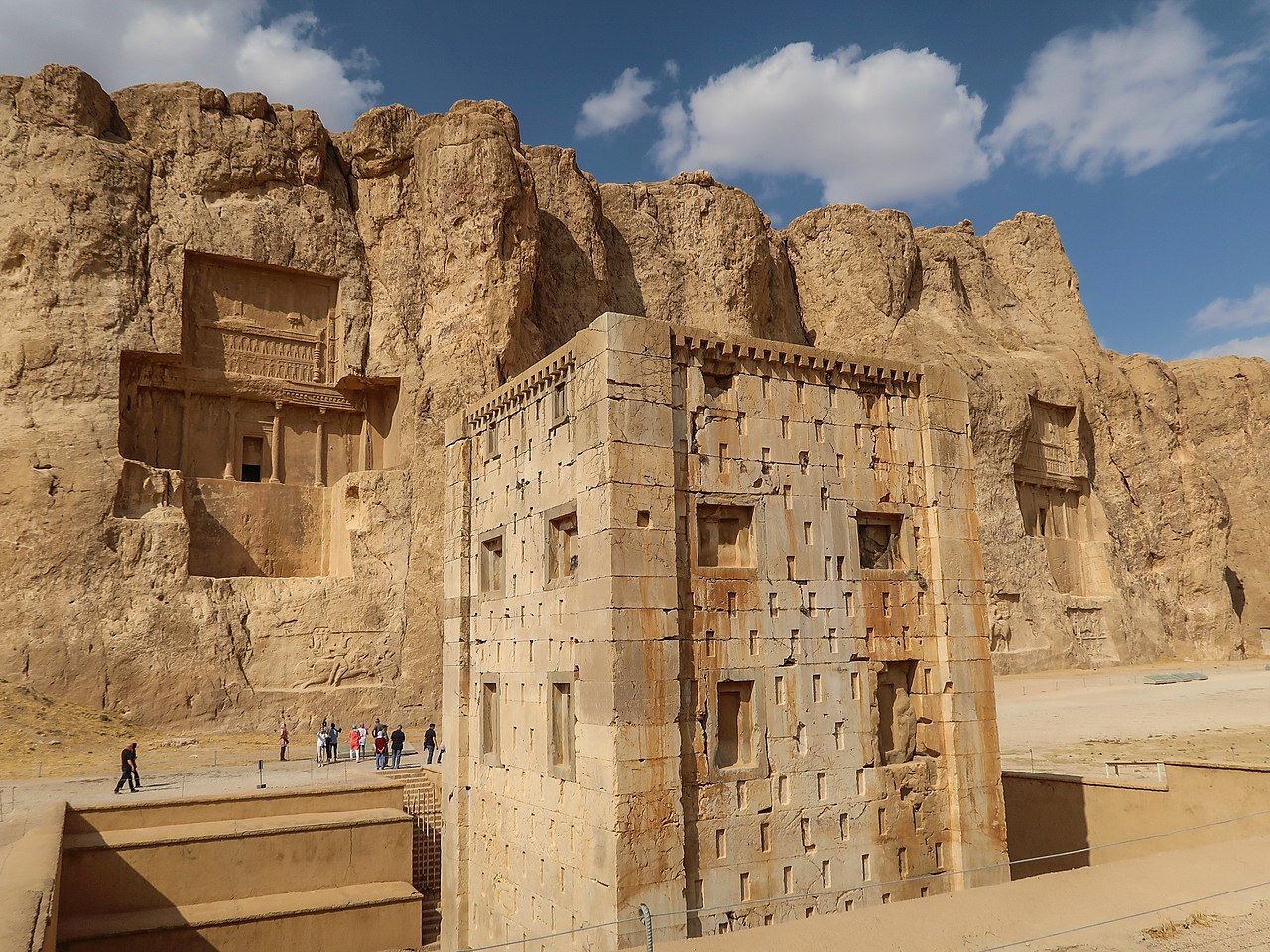Urgent need for attention: land subsidence threatens Naqsh-e Rustam

TEHRAN - Alireza Askari Chaverdi, the director of the Persepolis and Naqsh-e Rustam historical sites, has reported a critical funding cut for Persepolis while emphasizing the necessity of treating the land subsidence crisis at Naqsh-e Rustam as an international project.
The situation’s urgency at Naqsh-e Rustam calls for viewing the preservation efforts on a national and international scale, Mehr quoted the official as saying on Tuesday.
“The ongoing land subsidence and water management issues, coupled with recent budget constraints, complicate these efforts.”
“However, we recently conducted a ground scan to the best of our abilities with the current budget,” Askari Chaverdi said.
Naqsh-e Rustam, a site of immense historical importance, faces serious threats from drought-induced land subsidence, which has caused significant ground fissures and landslides. These issues have raised considerable concern regarding the preservation of the ancient stone carvings and royal tombs at this treasured site.
Chaverdi explained that despite the geographical distance between Persepolis and Naqsh-e Rustam, archaeological studies indicate that the entire region was historically part of a broader area known as Parseh.
“This area was a hub of culture and knowledge, contributing significantly to Iran’s history, including advancements in writing, architecture, astronomy, and science.”
Given the historical significance of Naqsh-e Rustam and the extensive preservation work needed, the project’s scope must be recognized as both national and international,” Chaverdi stressed. He also noted that despite their limited resources, they have initiated exploratory programs, including a recent ground scan completed two days ago, and archaeological excavations to assess the depth and extent of the fissures.
Chaverdi said that some of the site’s geological faults date back to ancient times, including the Achaemenid era, while others are related to activities from the past century. He highlighted the extensive nature of the Naqsh-e Rustam site, arguing that it cannot be adequately preserved with minimal funding.
Since the national budget allocation for Persepolis was cut two years ago, Chaverdi pointed out that the responsibility now falls on the local authorities.
He called for a dedicated budget line for Persepolis and Naqsh-e Rustam to ensure better management and preservation of these invaluable historical sites.
In May, Chaverdi announced the implementation of a comprehensive plan aimed at “re-organizing and securing” the Naqsh-e Rustam historical site. This ancient necropolis, renowned for its rock-cut tombs, bas-reliefs, and the Ka’ba-ye Zoroaster, is now receiving updated and safer pathways for tourists, the official added.

Chavardi detailed the recent improvements, stating, “We have redesigned and installed new guide signs. Additionally, site furnishings have been repaired and renovated, and the area has been cleared of weeds.” These efforts are part of a broader initiative to enhance the visitor experience while ensuring the preservation of this invaluable historical site.
Naqsh-e Rustam stands as a testament to ancient craftsmanship, featuring a series of breathtaking Sassanid bas-relief carvings. The site houses four imposing tombs, believed to be the final resting places of Persian Achaemenid kings—Darius II, Artaxerxes I, Darius I, and Xerxes I—arranged left to right along the cliff face. However, scholarly debate continues regarding their precise identities.
Above these majestic tombs, intricate bas-reliefs echo the grandeur of Persepolis, portraying kings seated on thrones, upheld by figures symbolizing the diverse nations under their rule. Additionally, two similar graves, likely belonging to Artaxerxes II and Artaxerxes III, lie within the vicinity of Persepolis.
Beneath the solemn funerary chambers, seven Sassanian-era bas-reliefs adorn the cliffside, vividly depicting imperial conquests and regal ceremonies. Informative signboards accompany each scene, offering detailed descriptions in English to enhance the educational experience for visitors.
At the base of Naqsh-e Rustam stands the enigmatic Ka’ba-ye Zardusht, or the Kaaba of Zoroaster. This square structure, approximately 12 meters tall and 7 meters wide, likely dates back to the early 6th century BC and features inscriptions from various periods thereafter. Despite its historical significance, the original function of Ka’ba-ye Zardusht remains a mystery. Some speculate it served as a tomb for Achaemenian royalty or as an altar, potentially dedicated to the goddess Anahiti, associated with royalty, war, and fertility.
The name Naqsh-e Rustam, translating to “Picture of Rustam,” pays homage to the legendary Iranian hero celebrated in the Shahnameh and Persian mythology. Ancient locals mistakenly believed the carvings beneath the tombs depicted scenes from Rustam’s tales.
These recent efforts to enhance and secure Naqsh-e Rustam underscore the ongoing commitment to preserving Iran’s rich cultural heritage. By improving access and providing detailed information, the site continues to educate and inspire visitors from around the world.
AM
